Yoga for Teens
Yoga is a great way to support overall well-being by building confidence, balance, and self-awareness. It is a natural way to enjoy good physical, emotional, and mental health in this busy world. Yoga is fit for all age groups, as its multiple benefits help people stay healthy and clear-minded. Among several age groups, Yoga for Teens or Adolescents also marks a significant importance in their growing period of physical, emotional, and mental changes. Teens, whether girls or boys, face different challenges such as bodily and hormonal changes, educational stress, and socializing. As changes happen, Yoga for Teens proves to be a life-changing tool to nurture their physical, emotional, and mental growth.
Why Yoga for Teens?
Yoga for teens is not only about physical and mental growth, but it’s also for emotional growth. Teens find it hard to deal with rapid emotional changes in this fast-paced, growing world. The instant changes in relationships are making it tougher to accept the reality as it is. Yoga for teens is here to support them in their overall growth and provide insight to reflect as well as accept themselves.
a. Improves Self-Esteem and Body Positivity
Yoga improves self-esteem and body positivity by allowing one to accept oneself. It further enhances in building of a healthier and compassionate relationship. The self-acceptance boosts self-esteem and embraces the positive outcomes in a life.
b. Supports Emotional Balance
Hormonal changes during puberty cause mood swings, anxiety, and irritability. It is a natural process, but for teens, several doubts arise within themselves. This leads to an increase in stress. Yoga promotes emotional stability by enhancing calmness and emotional balance.
c. Increases Concentration
Regular yoga practices develop a habit of consistency and build focus. The sharpened focus helps to increase concentration. As a result, it gives clarity to perform any tasks mindfully and make proper decisions. An ability to manage everything on time also develops.
d. Builds Physical Strength and Flexibility
Daily Yoga practices build physical strength, improving the right body postures. It further increases flexibility, allowing the body to stretch properly and be free of any bodily pains or injuries. Not only does the flexibility in the body grow, but the mind also develops, which supports thinking more actively.
e. Inspires Mindful Living
Regular Yoga practice inspires mindful living as it instills values like patience, resilience, empathy, and gratitude. These values support building respectful relationships and make the right choices relating to body, mind, and the soul.

Quick Tips before Starting the Yoga Journey
- Select age-appropriate classes with an experienced yoga instructor who understands how to work with teens or adolescents.
- Practice Yoga in such an environment where you feel safe and comfortable to explore new poses and express yourself openly.
- Wear comfortable clothes for the free movement of the body while practicing yoga poses.
- Consistency is a key to making a difference. Thus, be consistent and practice even if it is only for 10–15 minutes daily.
- To keep Yoga sessions engaging and entertaining, integrate fun activities such as soothing music, storytelling, or themed Yoga classes.
- Enjoy the journey and don’t only focus on the result, thus stay patient.
Also Read: Yoga for Kids
Beginner Yoga Poses for Teens
A. Tadasana (Mountain Pose)
Steps
- Stand on a mat with a straight-legged posture, the feet together, heels slightly apart, and wide-set toes.
- Draw your weight evenly into the body and slowly lift your kneecaps.
- Open your chest wide, straighten your spine, and keep your shoulders aligned over your hips.
- Stretch your hands straight up with palms facing forward.
- Tilt the crown of the head upwards without tilting the chin upwards, but keeping it parallel to the ground.
- Remain in a steady pose for 15-30 seconds, breathing slowly.
- Bring your hands down and back into a normal standing position.

Tadasana Benefits
- Increases body awareness, promoting better balance and coordination
- Proper body alignment improves blood circulation and respiration
- Calms the mind and improves concentration, promoting mental focus
Tadasana Cons
- Avoid knee locking for those people who have knee problems
- Improper alignment of hips, feet, or shoulders causes strain in the lower back or knees
B. Cat-Cow Pose (Marjari-Bitilasana)
Steps
Set yourself in Bharmanasana (tabletop position), keep the hips directly above the knees, and the hands shoulder-width apart.
For Bitilasana (Cow Pose):
- Inhale as you allow the tummy to drop toward the mat, lifting your chest and tailbone.
- Open your chest and bend your back, looking slightly upward.
For Marjari (Cat Pose):
- Exhale as you round your back toward the ceiling.
- Tuck your chin in toward your chest and draw your navel toward your spine.
- Extend the stretch by pressing the mat with your hands and knees.
- Continue with these two postures, consecutively, in sync with your breath.
- Practice 5-10 rounds of the Marjari-Bitilasana pose effortlessly with every inhale and exhale.

Marjari-Bitilasana Benefits
- Promotes better breathing sequences
- Stimulates internal organs for a youthful and energetic body
- Improvement in digestion increases metabolism, helping in weight loss
Marjari-Bitilasana Cons
- Inappropriate practice causes lower back or spine irritation
- Overstretching causes stiffness in the neck or back
C. Child’s Pose (Balasana)
Steps
- Kneel on the mat, big toes touching.
- Keep your knees wide apart.
- Sit back on your heels.
- Come to the table pose.
- Exhale and lower your hips to the heels.
- Lower your forehead on the mat.
- Keep your knees in a comfortable position.
- Stretch your arms in front, stacked under the forehead or alongside your body.
- Breathing slowly, hold for 1–3 minutes.
- Slowly inhale up, release, and get back to a seated position.

Balasana Benefits
- Activates the parasympathetic nervous system
- Supports blood pressure regulation
- Promotes deep, cooling breaths and keeps the mind calm
Balasana Cons
- Avoid those with knee problems or hip tightness
- This asana may raise cranial pressure in some hypertensive individuals
D. Paschimottanasana (Seated Forward Bend)
Steps
- Sit on the mat and bring both legs in front of you with pointed toes inward.
- Keep your back straight, lengthen the spine, and expand the chest.
- Inhale and raise both hands, extending the spine further.
- Bring the hands in alignment with the ears.
- Exhale, bring the chin out, and bend down as far as you can.
- Reach for your feet, ankles, or toes to improve your flexibility.
- Bring your elbows down on either side of the feet.
- Bring your forehead to rest on your legs.
- Raise your hands slowly in line with your ears.
- Inhale, extend the spine upward.
- Exhale, bring both hands down, and release.
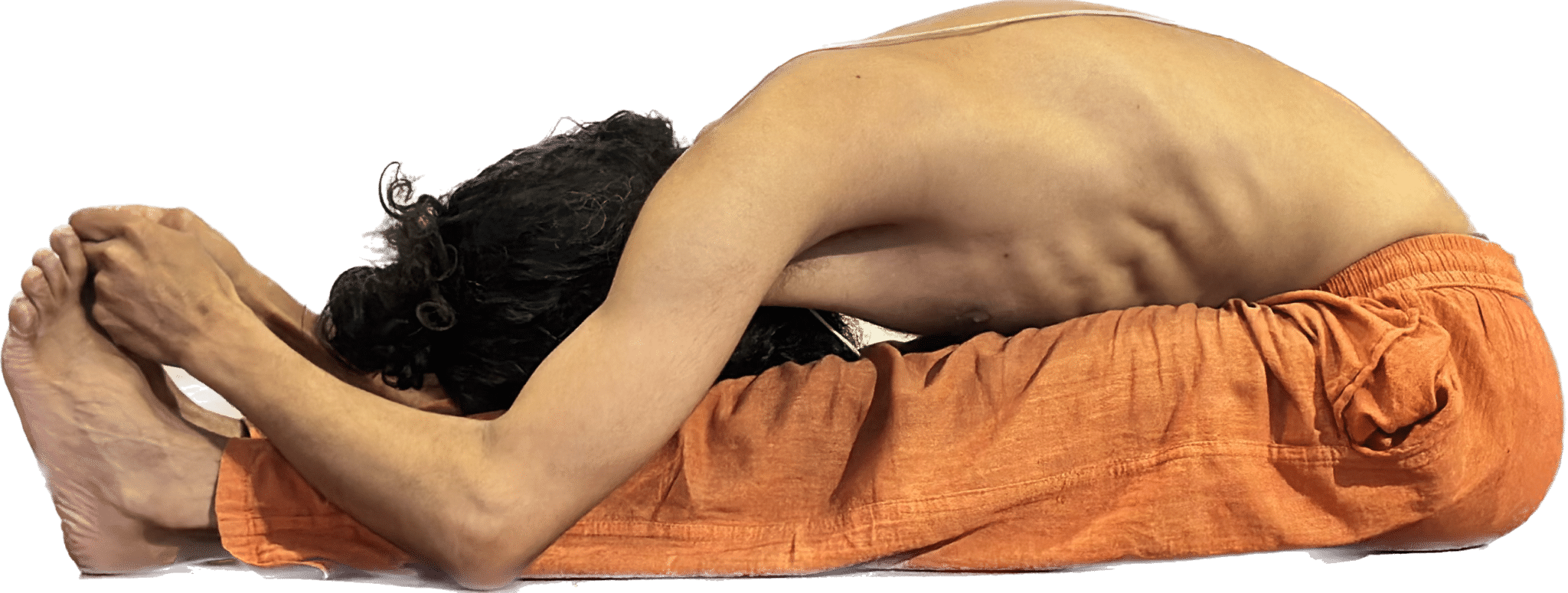
Paschimottanasana Benefits
- Promotes youthfulness by giving clarity and flexibility to the mind
- Stretching improves flexibility in the body
- Eases the nervous system and relieves pain in the hamstring, calf, neck, and lower back muscles
Paschimottanasana Cons
- An incorrect practice causes strain on the lower back, shoulders, neck, or hamstrings
- Be careful while stretching too much, as there’s a risk of rounding the back
E. Supta Baddha Konasana (Reclining Bound Angle Pose)
Steps
- Sit with a straight spine on a mat.
- Bend your knees and bring your feet’ soles together in a diamond shape.
- Slowly lie on your back on a mat.
- Place a cushion, yoga blocks, or blankets under each knee if needed.
- Beginners can use a bolster or pillow on their back for support.
- Close your eyes, stay for 5–10 minutes, breathing slowly and deeply.
- Feel Relaxed while exhaling.
- Slowly come up using your hand’s support.
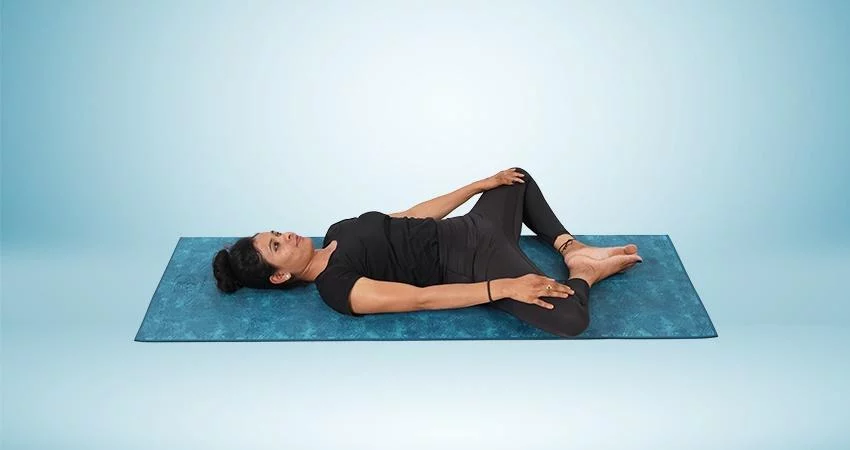
Supta Baddha Konasana Benefits
- Gently opens the hips and pelvis
- Calms the nervous system and reduces stress
- Relieves menstrual cramps and tension, and controls PCOS symptoms in girls
Supta Baddha Konasana Cons
- Not suitable for those with knee or hip injuries
- Slightly uncomfortable for those with lower back pain and those with tight hips
Also Read: Top 7 Yoga Poses for Youthfulness
Conclusion
Teens or adolescents are a phase where they often get drawn in many directions. Yoga for teens is a boon as it provides an opportunity for them to understand their body and themselves. It helps to reflect within and reconnect to their inner self for their betterment. Yoga inspires teens to build confidence within themselves by nurturing strength, self-awareness, and quietness. Furthermore, it leads to greater mental clarity and resilience to move ahead positively in their lives.
Written By: Anjali B
5 Yoga Poses for Hypertension Relief
Himalayan Yoga presents an insightful article on 5 Yoga Poses for Hypertension Relief. Stress due to the hectic schedule in this fast-paced life causes the risk of numerous health issues. Hypertension or high blood pressure is among the top health issues people face. People should not neglect hypertension, as it increases the risk of heart disease and stroke. It is one of the prime causes of premature death worldwide. Yoga is one of the best natural methods to relieve hypertension, besides medical treatment and lifestyle changes. Some yoga poses for hypertension relief activate the parasympathetic nervous system. As a result, it reduces anxiety, improves blood circulation, and promotes mindfulness.
What is Hypertension?
Hypertension, or high blood pressure, is a chronic medical condition characterized by constantly raised pressure in the arteries. It develops over time and typically does not show noticeable symptoms on its own. Thus, health follow-up is necessary for proper monitoring.
Types and Causes of Hypertension
Primary and secondary are two types of hypertension. People suffering from primary hypertension are approximately. 90-95%, whereas the remaining 5-10% of people suffer from secondary hypertension.
Primary Hypertension Causes
- Unhealthy food consumption (salty, fatty, and processed foods)
- Physical inactivity
- Obesity or being overweight
- Chronic stress and poor sleep quality
- Smoking and alcohol or substance use
- Age, Genetics, or family history
Secondary Hypertension Causes
- Too much alcohol consumption
- Kidney diseases or hormonal disorders
- Obstructive Sleep Apnea
- Use of medicines such as Antidepressants, decongestants, birth control pills, anti-inflammatory drugs, etc.
Also Read: Yoga and Stress
5 Yoga Poses for Hypertension Relief
Here are 5 yoga poses for Hypertension Relief to integrate into your daily life for a stress-free and healthy lifestyle.
A. Sukhasana (Easy Pose) with Deep Breathing
Steps
- Sit on a mat with straight legs in front.
- Bend the right knee, and bring the right leg sole under the left thigh.
- Bend the left knee, and bring the left leg sole under the right thigh.
- Adjust yourself to sit at ease with a straight spine.
- Place your hands comfortably, palms facing up, on your knees.
- Relax and close your eyes.
- Breath slowly, inhale and exhale deeply through the nose.
- Beginners continue to stay for 3-5 minutes.
- Slowly open your eyes.
- Change the leg position after one session of 3-5 minutes.
- Open the eyes and release slowly.
- With practice, increase the time duration.
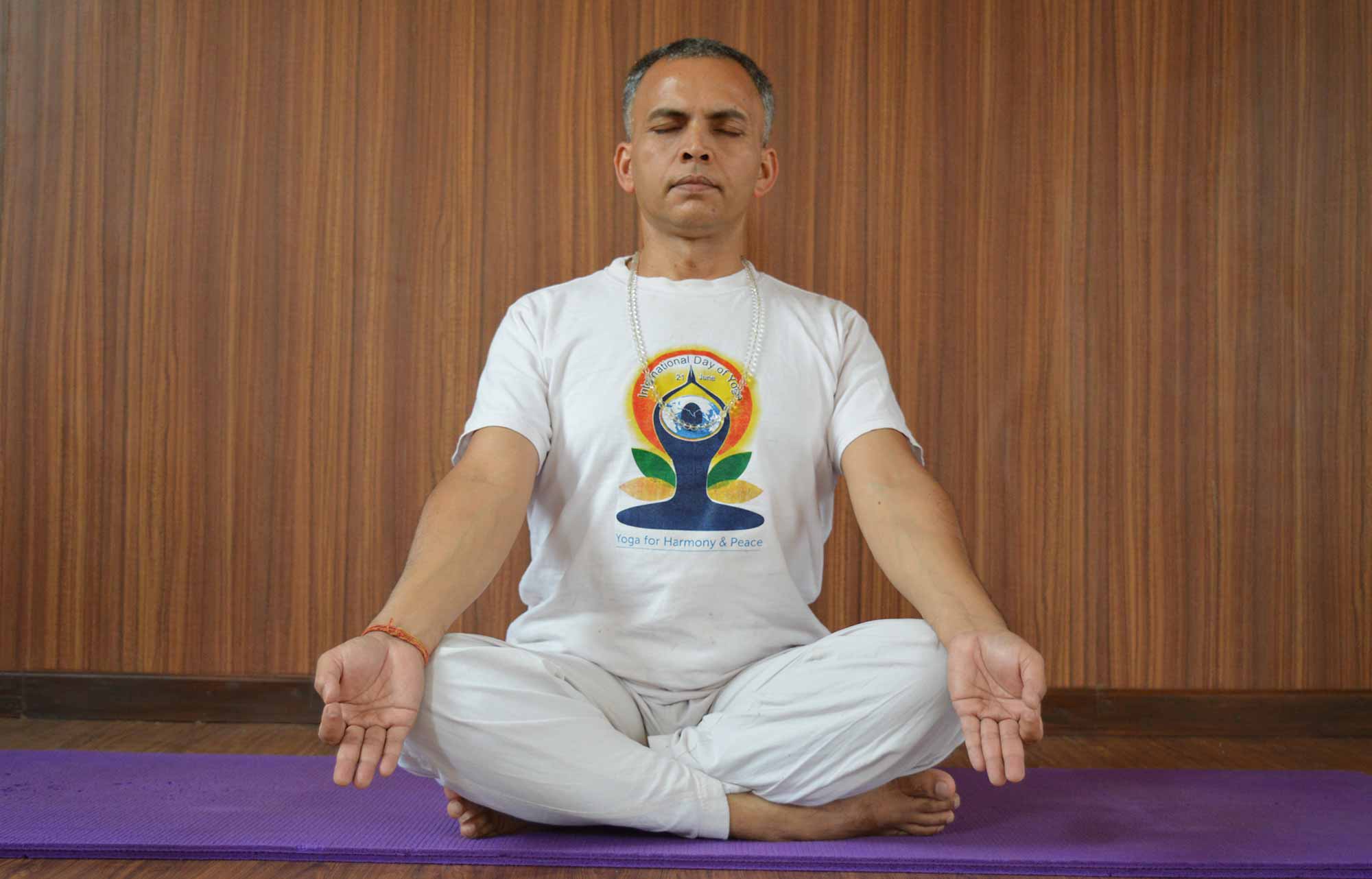
Sukhasana Benefits
- Improves body posture and flexibility in the hips, knees, and ankles
- Reduces stress and promotes relaxation
- Parasympathetic nervous system activation regulates blood pressure
Sukhasana Cons
- May cause discomfort in the hips or knees if seated too long.
- Incorrect breathing technique can shoot up pressure.
B. Viparita Karani (Legs-Up-the-Wall Pose)
Steps
- Sit sideways next to a wall.
- Lie back and swing your legs up against the wall.
- Adjust your hips close to the wall.
- Let your arms rest at your sides.
- Stay for 5–15 minutes, breathing deeply.
- Slowly bend your knees and roll over to one side.
- Take a rest and get up gently.
Viparita Karani Benefits
- Releases fatigue and lowers body pressure over time
- Improvement in circulation reduces leg swelling
- Eases stress and offers sound sleep
Viparita Karani Cons
- Avoid those with lower back issues and extreme hypertension
- Not recommended for females during menstruation
C. Ardha Matsyendrasana (Half Spinal Twist)
Steps
- Sit with legs extended on a mat.
- Take your right foot across your left knee.
- Place your right hand behind for support.
- Inhale and raise the left arm.
- Slowly twist and place your left hand on the foot.
- Bend your elbow and place your hand on your right shoulder (if you can’t touch the foot).
- Inhale to stretch, exhale to twist. Hold for 30 seconds and switch sides.
- In one sitting, practice it for only 2 to 3 minutes.
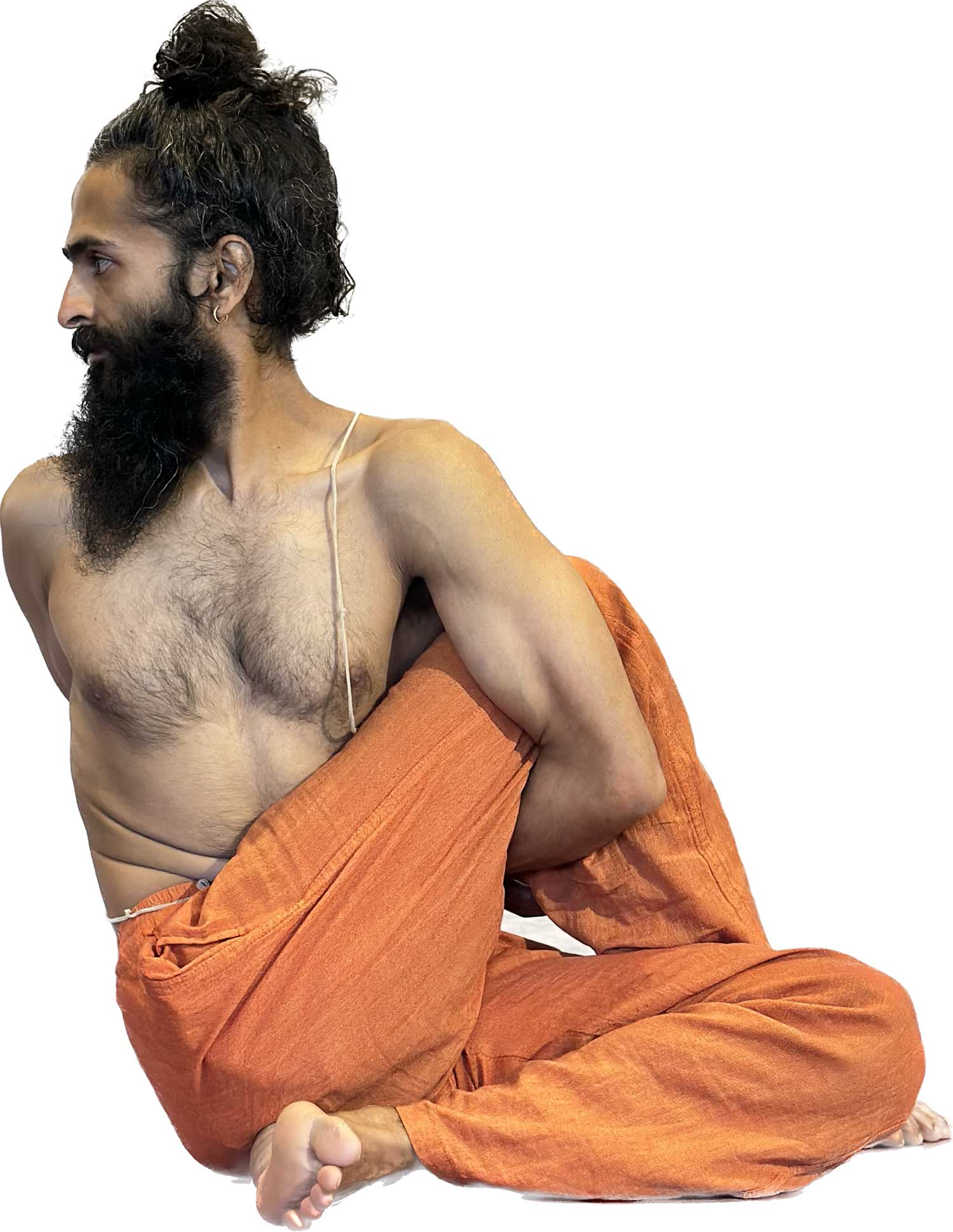
Ardha Matsyendrasana Benefits
- Reduces excess body heat and calms the nervous system
- Develops spinal flexibility
- Purifies the internal organs and promotes digestion
Ardha Matsyendrasana Cons
- Long or incorrect holding of breath can cause a rise in blood pressure
- Avoid during pregnancy and for those with back issues and uncontrolled hypertension
D. Balasana (Child’s Pose)
Steps
- Kneel on the mat, big toes touching.
- Keep your knees wide apart.
- Sit back on your heels.
- Come to the table pose.
- Exhale and lower your hips to the heels.
- Lower your forehead on the mat.
- Keep your knees in a comfortable position.
- Stretch your arms in front, stacked under the forehead or alongside your body.
- Breathing slowly, hold for 1–3 minutes.
- Slowly inhale up, release, and get back to a seated position.

Balasana Benefits
- Safe to practice for people with high blood pressure
- Activates the parasympathetic nervous system, supporting blood pressure regulation
- Promotes deep, cooling breaths and keeps the mind calm
Balasana Cons
- Avoid those with knee problems or hip tightness
- This asana may raise cranial pressure in some hypertensive individuals
E. Setu Bandhasana (Bridge Pose)
Steps
- Lie down on the mat with your arms at your sides on the floor.
- Bend your knees and place your heels close to your butt.
- Hold your ankles, slowly inhale, and raise your hips toward the ceiling.
- Keep your hips level and engage your core to support your lower back.
- Breathe in the normal range, but deeply for 5–10 breaths or as your suitability.
- Exhale and slowly release the posture.
- Gently lower your hips down and lie on the mat.
- Relax in Shavasana.

Setu Bandhasana Benefits
- Helps to lower stress and regulate blood pressure
- Improves blood circulation and body posture
- Encourages deep cooling breath and improves lung capacity
Setu Bandhasana Cons
- Holding your breath for a long time can raise your blood pressure
- Not suitable for people with neck or recent back injuries
Conclusion
Yoga is undoubtedly an effective tool to relieve hypertension with continuous mindful practice. These 5 Yoga Poses for Hypertension Relief prove beneficial for controlling blood pressure, as they encourage relaxation, better circulation, and a calmer mind. However, we advise consulting a doctor or trained instructor before practicing these asanas for a fruitful result.
Written By: Anjali B
5 Yoga Poses to Beat the Heat
The unhealthy eating habits and lifestyle, and soaring temperatures are causing the effects of excess body heat. The excess body heat stimulates tiredness, irritation, dehydration, and sleeplessness, making it hard to stay cool. Avoiding the direct sunlight and staying hydrated are common practice remedies. Apart from this, there are amazing benefits of yoga, offering natural, effective cooling effects within the body. Certain yoga poses trigger the body’s natural cooling system, which promotes internal cooling by easing stress and minimizing inflammation. We present 5 Yoga Poses to beat the Heat to cool you down naturally for relaxation or to deal with hot weather or excessive heat within the body.
5 Yoga Poses to Beat the Heat
A. Sheetali Pranayama (Cooling Breath)
Steps
- Sit in a comfortable cross-legged position on a mat.
- Keep your spine straight.
- Place your hands on your knees in your preferred mudras.
- Stick your tongue out and roll the sides to form a tube, or slightly curl it if you can’t roll.
- Inhale deeply through the rolled tongue, filling your lungs.
- Focus on the cooling sensation of the breath.
- Move your tongue in, close your mouth, and exhale through the nose.
- Repeat for 10–15 rounds or as you prefer.
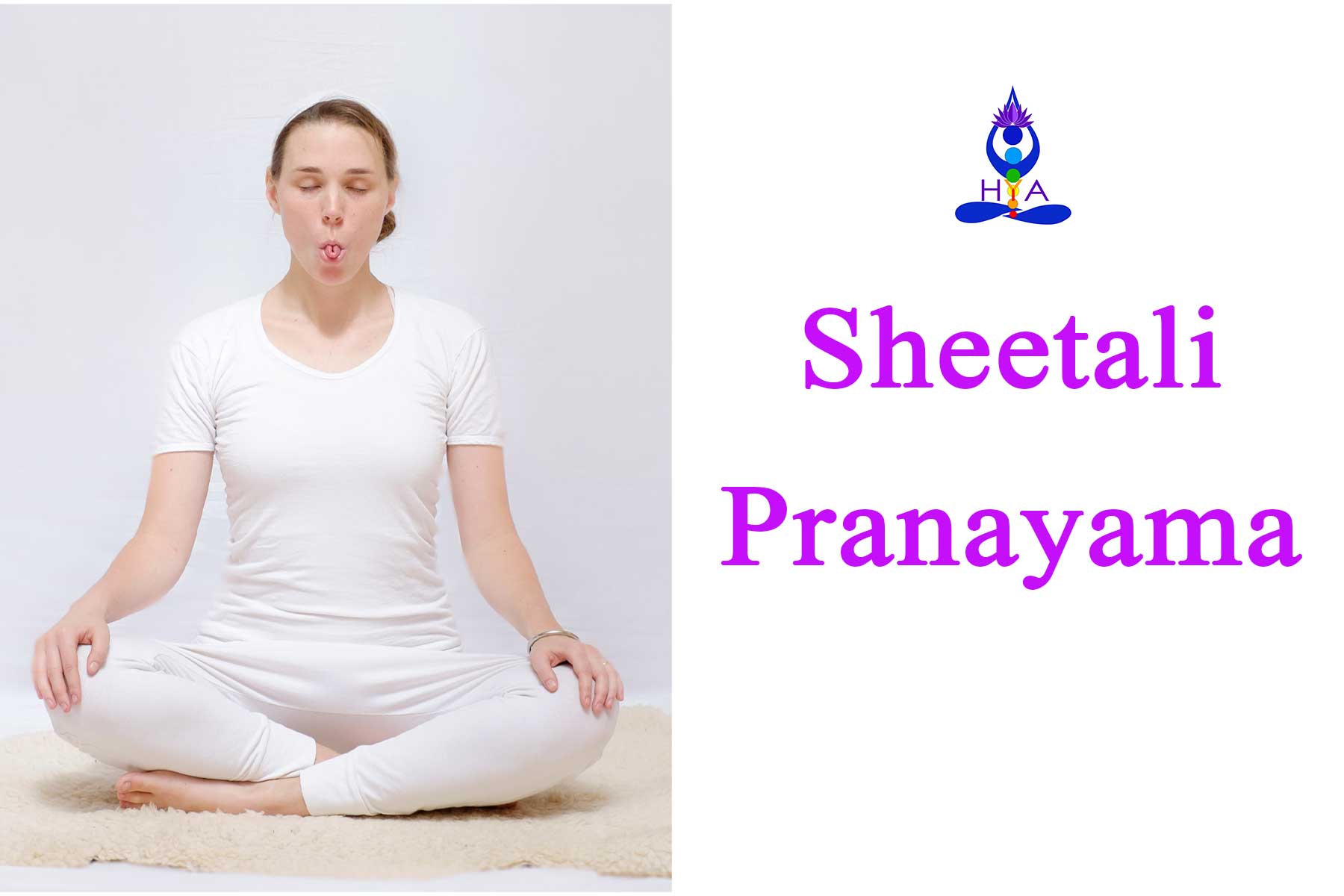
Sheetali Pranayama Benefits
- Cools the internal body temperature and balances pitta dosha
- Reduces stress and anxiety
- Highly beneficial for those with high blood pressure
Sheetali Pranayama Cons
- Not recommended during the cold weather and in extremely polluted environments
- Avoid if suffering from respiratory diseases or low blood pressure
B. Supta Baddha Konasana (Reclining Bound Angle Pose)
Steps
- Sit with a straight spine on a mat.
- Bend your knees and bring your feet’ soles together in a diamond shape.
- Slowly lie on your back on a mat.
- Place a cushion, yoga blocks, or blankets under each knee if needed.
- Beginners can use a bolster or pillow on their back for support.
- Close your eyes, stay for 5–10 minutes, breathing slowly and deeply.
- Feel Relaxed while exhaling.
- Slowly come up using your hand’s support.

Supta Baddha Konasana Benefits
- Great for those with asthma, bronchitis
- Encourages deep, cooling breathing
- Calms the nervous system
Supta Baddha Konasana Cons
- Not suitable for those with knee or hip injuries
- Avoid during lower back pain and third-trimester pregnancy
C. Viparita Karani (Legs-Up-The-Wall Pose)
Steps
- Sit sideways next to a wall.
- Lie back and swing your legs up against the wall.
- Adjust your hips close to the wall.
- Let your arms rest at your sides.
- Stay for 5–15 minutes, breathing deeply.
- Slowly bend your knees and roll over to one side.
- Take a rest and get up gently.
Viparita Karani Benefits
- Releases fatigue and lowers body heat
- Improvement in circulation reduces leg swelling
- Eases stress and offers sound sleep
Viparita Karani Cons
- Avoid those with lower back issues
- Not recommended for females during menstruation
Also Read: Yoga for Pitta
D. Balasana (Child’s Pose)

Steps
- Kneel on the mat, big toes touching.
- Keep your knees wide apart.
- Sit back on your heels.
- Come to the table pose.
- Exhale and lower your hips to the heels.
- Lower your forehead on the mat.
- Keep your knees in a comfortable position.
- Stretch your arms in front, stacked under the forehead or alongside your body.
- Breathing slowly, hold for 1–3 minutes.
- Slowly inhale up, release, and get back to a seated position.
Balasana Benefits
- Calms the mind by minimizing heat-related stress
- Smooth back and hip stretching
- Promotes deep, cooling breaths
Balasana Cons
- Avoid those with knee problems
- Don’t practice after eating, as it compresses the abdomen
E. Ardha Matsyendrasana (Half Lord of the Fishes Pose)

Steps
- Sit with legs extended on a mat.
- Take your right foot across your left knee.
- Place your right hand behind for support.
- Inhale and raise the left arm.
- Slowly twist and place your left hand on the foot.
- Bend your elbow and place your hand on your right shoulder (if you can’t touch the foot).
- Inhale to stretch, exhale to twist. Hold for 30 seconds and switch sides.
- In one sitting, practice it for only 2 to 3 minutes
Ardha Matsyendrasana Benefits
- Reduces excess body heat
- Develops spinal flexibility
- Purifies the internal organs and promotes digestion
Ardha Matsyendrasana Cons
- Demanding for beginners
- Avoid during pregnancy and those with back issues
Conclusion
This summer, stay cool with these 5 Yoga Poses to beat the heat and feel relaxed and energized. Along with these Yoga Poses, always stay hydrated, stay out of direct sun exposure, and maintain a healthy lifestyle and eating habits. Listen to your body and adjust to your comfort while practicing yoga poses. Take rest, stay hydrated, and don’t practice under stress or hurry. Incorporate this natural practice to start a cool, healthy, and balanced life.
Written By: Anjali B
